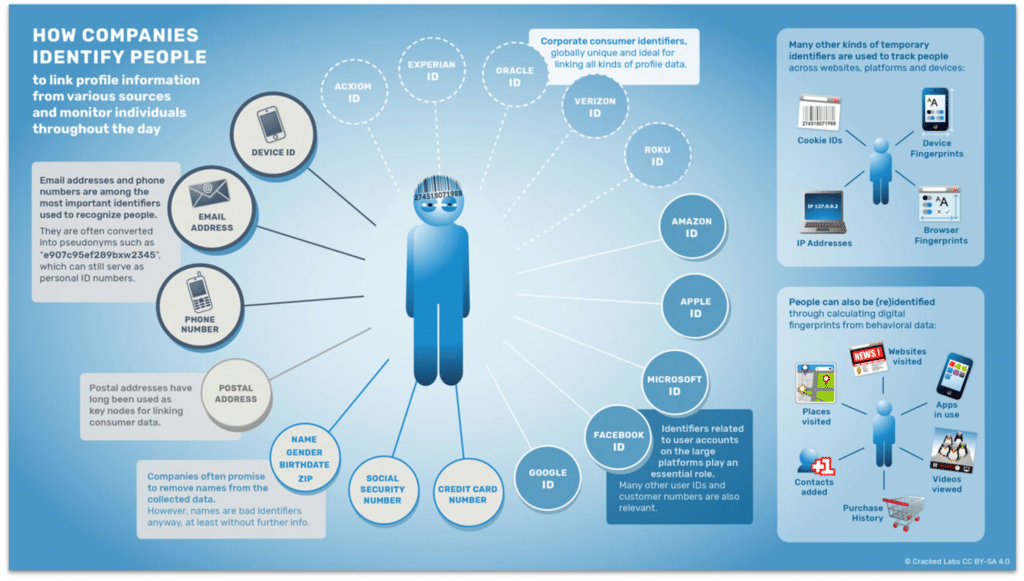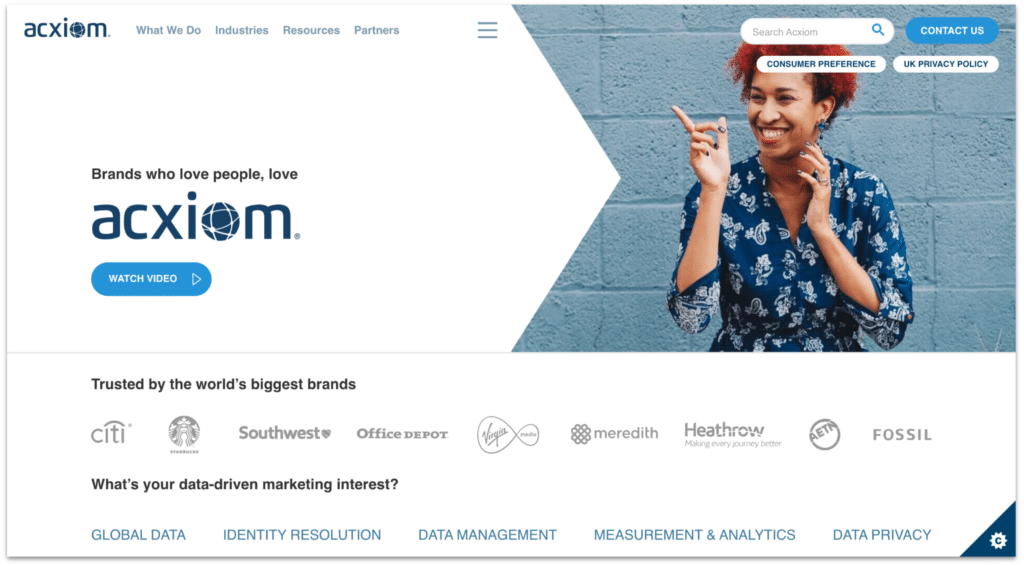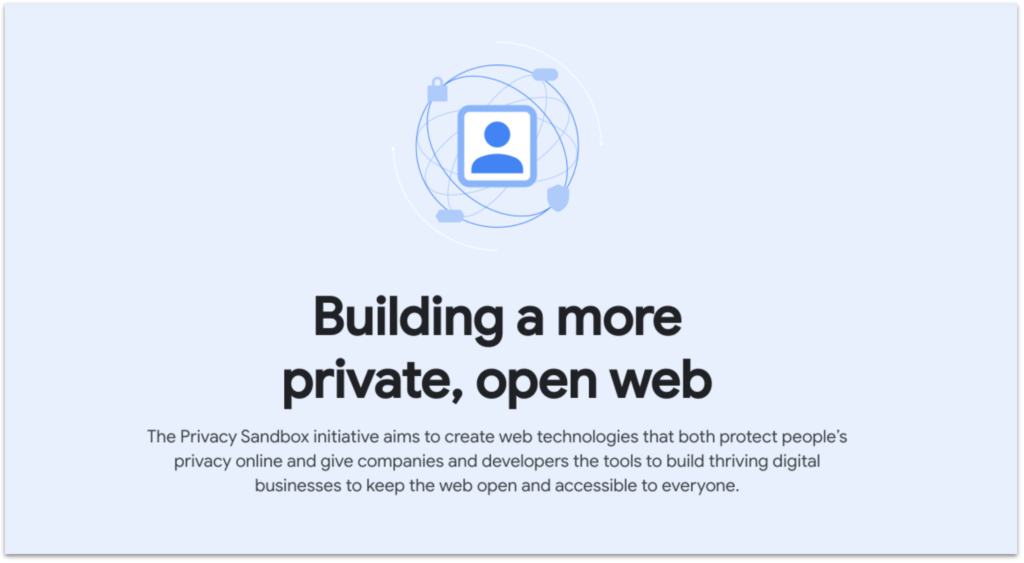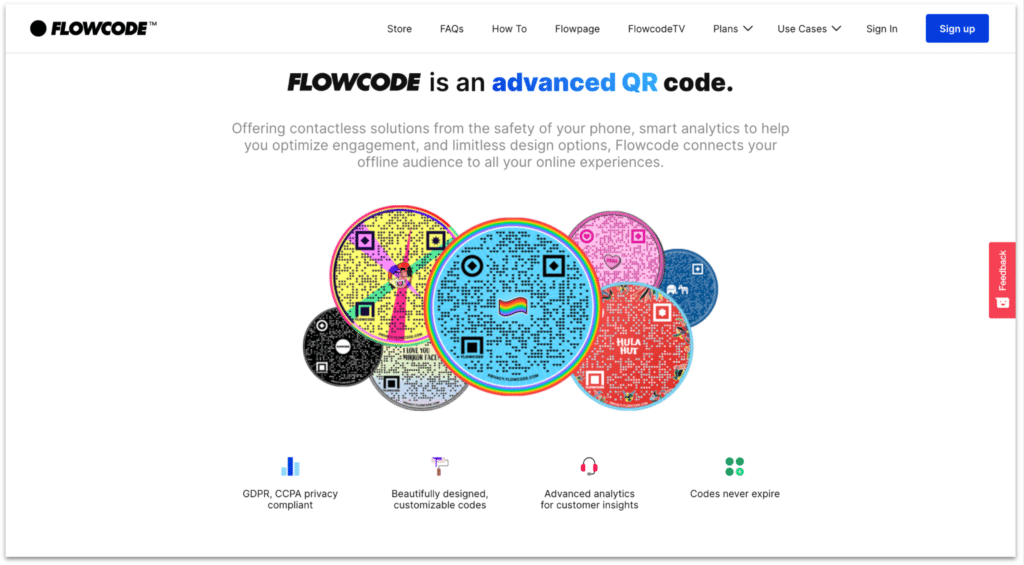In an effort to streamline a bloated digital advertising infrastructure and help create a new set of user privacy-focused open web standards, Google has announced that it will be ending support for third-party browser cookies in its Chrome browser in 2023 with its Privacy Sandbox.
On the face of it, this decision seems to be a positive solution to the many user privacy issues engendered by third-party cookies and a continuation of a trend already seen in other major browsers.
However, despite the collaborative approach taken by Google and the lengthy proposed timeline for finding a replacement for third-party cookies that suits individual users, digital advertising and publishers, the announcement has been met with some skepticism and trepidation.
Chrome is the most popular browser on the market. Moving away from the targeted ads enabled by third-party cookies could replicate the drop in ad revenue and B2B MarTech companies’ share prices that followed Apple’s implementation of intelligent tracking prevention in Safari.
Given these seismic changes, many publishers and advertisers are left to wonder: What does this mean for the future of targeted ads?
What Is the Privacy Sandbox?
The Privacy Sandbox “is a collaborative effort to develop new web technologies that will improve people’s privacy protection and maintain existing web capabilities, including advertising, keeping the web open and accessible to everyone.”
Google’s Privacy Sandbox will restrict tracking people across the Internet, enable publishers to build sites that respect people’s privacy, and do away with third-party cookies in Chrome, which Google rolled out on January 25, 2021:
“Advertising is essential to keeping the web open for everyone, but the web ecosystem is at risk if privacy practices do not keep up with changing expectations. People want assurances that their identity and information are safe as they browse the web.
That’s why Chrome introduced the Privacy Sandbox and, today, shared progress on their path to eliminate third-party cookies by replacing them with viable privacy-first alternatives, developed alongside ecosystem partners, that will help publishers and advertisers succeed while also protecting people’s privacy as they move across the web.”
Here is how companies use these third-party cookies to identify people:

Why Is Google Phasing Out Third-Party Cookies?
The privacy issues surrounding the use of third-party cookies – cookies that are generated by websites, such as retailer ads, other than the one you are currently visiting – are nothing new:
The data collected by these tiny scraps of code beams a huge range of information about users and their preferences back to third parties, who often sell that data to a range of businesses and individuals.
So why has Google decided to phase out third-party cookies in Chrome? Let’s take a look at several reasons.
1) User Data Misuse
The market for complex data on individuals is huge and growing. In 2017, data broker (a company that buys and sells personal consumer information for advertising campaigns) Acxiom provided its clients with 3,000 attributes on 700 million people. Just one year later that number was up to 10,000 attributes on 2.5 billion people:
The data collected and sold isn’t just used for targeted ads, it’s also used to target influence on political campaigns and to make decisions on an individual’s suitability for things like credit cards and jobs.
Not only is there a risk of storing all that intensely personal data, but that information is readily available for anyone willing to pay for it, making it a goldmine for doxxers and fraudsters.

2) Increased Privacy Legislation
Privacy concerns have led to the introduction of new data privacy legislation, such as the General Data Protection Regulation (GDPR) laws in Europe and the UK. However, as with all after-the-fact legislation, GDPR is based on the technology at the time.
Moving to a different system for targeted ads could allow Google to sidestep some of the more restrictive legislation aimed at third-party cookie use.
3) Increased Privacy Awareness
Another factor of why Google is getting rid of third-party cookies in Chrome is the general increased awareness that people now have of their own privacy and the issues that are more and more common.
Several surveys by the Pew Research Center found that:
- 75% of respondents rated the ability to control the data related to their personal activities as “very important.”
- 61% of respondents want there to be some form of the European Union’s “right to be forgotten” in the U.S.. (The Court of Justice of the European Union held that European citizens have a right to request that their personal data be delisted from search engines, i.e. the “right to be forgotten”.)
- With the rise in cloud computing applications, 90% of respondents said that they “would be very concerned if the company at which their data were stored sold it to another party.”
4) Reputation Issues
Google’s position at the forefront of how we access the web, and how third parties access our data, puts them in a position to become a lightning rod for criticism as more and more people wake up to the dangers of personal data collection.
Moving away from the use of third-party cookies, especially since all their major rivals have already done this (or are doing so), could be seen as an attempt by Google to protect its reputation.
5) The Development of New Ad Technologies
Google, among others, has been hard at work creating new ad targeting options that provide relevant ads without needing to track users on an individual basis.
One of Google’s “viable privacy-first alternatives” to third-party cookies is using Federated Learning of Cohorts (FLoC) to hide individual users in larger groups of people with similar interests. This allows ads to be targeted at these cohorts without revealing specific personal information.
The Federated Learning of Cohorts is an API (“Application Programming Interfaces,” which is a type of software interface that connects computers or computer programs) based on an algorithm that points the browser user to various audiences who display similar browser behaviors and interests.
6) Reducing the Number of CAPTCHAs
CAPTCHAs (“Completely Automated Public Turing tests to tell Computers and Humans Apart”) were introduced to guard against bots and spam.
Unfortunately, bot and spam creators can now easily manufacture bots that can solve most out-of-the-box CAPTCHA solutions. The result being that CAPTCHAs mostly just slow down the user experience.
Part of Google’s set of Privacy Sandbox proposals is to create a new alternative to CAPTCHAs as a clear response to user frustrations.

Google Privacy Sandbox: What We Know So Far
Due to Google’s decision to wait until 2023 to phase out third-party cookies entirely, the Privacy Sandbox is still in its infancy. However, we do know more than we did when it was first announced, such as:
- The basic shape of the Google Privacy Sandbox will be a virtual space that will allow for the testing of certain functions.
- The main aim of the sandbox initiative will be to turn a series of APIs into a new set of open web standards.
- These standards will replace the current third-party cookie system with a more user privacy-focused solution, while still allowing the advertising industry to conduct targeted ad campaigns.
- The APIs will act as the software intermediary between the user and the advertiser, improving security and protecting user privacy while still allowing targeted ads.

How Will Google Privacy Sandbox Work?
As mentioned previously, the Google Sandbox is still in development and, as a result, we’re likely to get a stream of new updates until its implementation in 2023.
However, we do have a fair amount of information regarding the five distinct APIs that will form the basis of the sandbox:
- The trust token API: This provides a trusted user with a cryptographic token that is stored in their browser. That token can then be used to evaluate the user’s authenticity, passing that “trust” from one context to another without revealing user information.
- The privacy budget API: Designed to curtail the amount of information that websites can collect from users, this API gives each website a “budget” of information they can collect from each user. This prevents cross-site tracking and the implementation of other user tracking technologies such as device fingerprinting.
- The conversion measurement API: A key inclusion for digital ad agencies and websites that make their primary revenue through advertising, the conversion measurement APIs measure purchases based on ads and attributes them to specific ads without using cross-site persistent identifiers.
- Federated Learning of Cohorts: FLoC uses machine learning to track the behavior patterns of users and place them into interest cohorts (specific groups of people), which are periodically reassessed. Advertisers can then target interest-based ads at these cohorts without needing to collect data on individual users.
- FLEDGE: Currently more of a framework than an API, with full details on how the finished version will work expected in Q4 2021, FLEDGE (“First Locally Executed Decision over Groups Experiment”) builds on core tenets of the previous TURTLEDOVE proposal and is based on three key concepts:
- Unique user information, such as IP addresses, is held in the browser, not by the advertiser.
- Ads can be targeted at user interest, but cannot be combined with other collected user data.
- Websites visited by users, as well as the ad networks associated with those sites, will not be able to access the visitor’s ad interests.
The Implications for Targeted Advertising without Third-Party Cookies
Since Google is the market leader in the web browser market, any changes in the way that Chrome uses third-party cookies are going to have a significant impact on the advertising web ecosystem.
Currently, third-party cookies are used to track user behavior and provide advertising that is targeted at the interests culled from that behavior. A prime example of this is products that a user has placed in their shopping basket, but has not actually bought.
Once Chrome stops supporting third-party cookies, there are a number of processes that are currently used to target ads that will stop working entirely. These include:
- Audience buying based on the third-party data
- Using cookie syncing to identify and target users
- Web-based retargeting campaigns
- Attributing ad views to conversions
With the death of the third-party cookie very much on the horizon, the search for alternatives is already underway. This is complicated somewhat, however, by the fact that the Google Privacy Sandbox is still in development, but there are already proposals at this stage:
- Circumventing the limited availability of first-party data through the use of persistent IDs, such as hashed and encrypted email addresses.
- Using the browser’s local storage to store and retrieve first-party data for targeting while making use of data clean rooms for measurement.
- Using QR codes and NFC tags on the product to harvest first-party data directly from users:

Whether any of these will represent a credible alternative to third-party cookies in the long term is still unclear. What is clear, however, is that new strategies and approaches will be required for advertisers to adapt to this new web ecosystem when it comes online in 2023.
3 Effective Strategies to Adapt to New Targeted Ads
As a thought leader in the digital marketing space, we’ve put together three effective strategies to help publishers and advertisers adapt to the changing landscape of targeted ads.
Strategy 1: Target Your Ads for the Privacy Sandbox
The first and most obvious strategy is to adapt current advertising processes to fit within the confines of the Google Privacy Sandbox.
Despite the Sandbox still being under development, we do have enough information to make some viable proposals:
- First-party cookie databases: First-party cookies are a potentially viable alternative to third-party cookies, even if they don’t provide the same levels of ease and convenience.
- FLoC and interest-based advertising: According to Google, ads using FLoC can see around 95% of the conversions per dollar spent in comparison to current ad models. This means that businesses can implement a more interest-based/relevant content approach to targeted ads without losing significant revenue.
- Audience creation: Under the FLEDGE proposal, advertisers will be able to create and bid for audiences without needing third-party cookies or specific user data.
- Conversion measurement: Being able to track conversion measurement is vital to understanding the effectiveness of advertising. The Google Privacy Sandbox will still enable advertisers to access reporting that both allows bidding models to recognize patterns in the data and deliver accurate measurements over collections of users.
The benefit of Google’s timeline is that there is time to develop these aspects of the Sandbox in conjunction with ad tech companies, publishers and advertisers, allowing businesses to create new strategies that work within the new ecosystem.
Strategy 2: Diversify Your Marketing Strategy
Diversifying your marketing strategy makes you less vulnerable to shifts in the online marketing paradigm. There are some easy-to-implement strategies that allow you to increase the number of ways in which you can make contact with your intended audience:
- Organic traffic generation: Instead of an over-reliance on third-party cookie-powered targeted ads, an increased focus on organic traffic generation through lead magnets, social strategies and content marketing significantly increases the number of paths between you and your target audience.
- Increased utility and relevance: Establishing yourself as a thought leader or subject matter expert through the production of useful and valuable content can actively help to bring your customers to you, rather than you constantly looking to target them.
- Explore other data collection channels: Alternatives to third-party cookies, such as first-party cookies, are still a viable user data collection method, and those able to adapt to these newly valuable channels the fastest will hold a competitive advantage over those who wait until the last minute to make the change.
Need help with your B2B SEO strategy? 🔍
Download this FREE Guide to find everything you need to know about Search Engine Optimisation to improve search rankings, bring in more relevant traffic and stand out from competitors.
Strategy 3: Get Help from Experts
The current disruption caused by the planned implementation of Google’s Privacy Sandbox has significantly increased the value of partnering with specialists to overcome this new layer of complexity to online advertising and drive positive outcomes.
Partnering with digital marketing agencies can provide a range of benefits before, during and after the implementation of Google’s Privacy Sandbox, including:
- Expert advice and guidance: A digital marketing agency can provide guidance and advice based on years of experience assisting clients just like you, who want to upgrade the effectiveness of their marketing or overcome issues, but aren’t sure how.
- Adaptive marketing strategies: Their position as subject matter experts and their industry connections allows marketing agencies to create innovative and adaptive marketing strategies, even in the face of the uncertainty caused by the transition to the Google Privacy Sandbox.
- Diversification solutions: In the face of a changing web advertising environment, many companies are looking to diversify away from complete reliance on targeted ads powered by third-party cookies. Digital marketing agencies are best placed to provide these companies with critical assistance with the formulation and execution of broader and diversified marketing strategies.
The Future for Targeted Ads
Unfortunately, as Google Privacy Sandbox is still in the development stage it’s impossible to accurately predict with any degree of certainty what the future holds for targeted ads.
What can be predicted, however, is that businesses will need to start adapting now to avoid falling behind competitors in the market after the era of third-party cookies comes to an end in 2023.
Plan now for an easier transition, as businesses that start the adoption and innovation process now will be the ones with the competitive advantage when the Google Privacy Sandbox goes live.
Given the uncertainty of the situation, it has never been more vital to partner with leaders in the digital marketing strategy space to help you navigate the uncertain future that the introduction of the Google Privacy Sandbox has created and build solutions that will see publishers and advertisers succeed beyond 2023.
As a thought leader in the digital marketing industry, Gripped can help you navigate the uncertain future that the introduction of the Google Privacy Sandbox has created.

